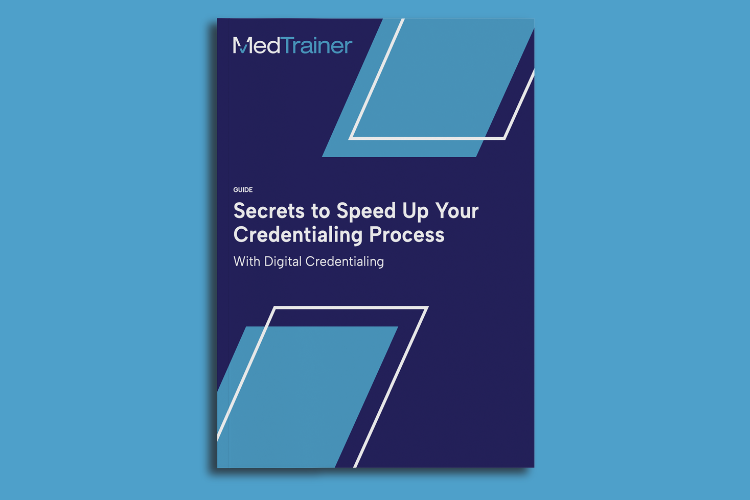We’re living in the era of streaming television, food delivery, and instant messaging — that is to say, we’re not used to things taking days, weeks, or even months to manifest. Unfortunately, there are some aspects of healthcare that just don’t move as quickly as we’re used to in everyday life. Too often, healthcare professionals find themselves tapping their foot and asking, “how long does it take to credential a provider?!”
Provider credentialing is a critical first step before allowing that person to see and treat patients. It’s a meticulous and time-intensive process that, unfortunately, can take longer than we want it to. Let’s explore the reasons why — and some ways to make the process as quick and painless as possible.
How Long Does It Typically Take To Credential a Provider?
The time it takes to credential providers can vary depending on a variety of factors. Generally speaking, it takes anywhere from several weeks to several months to complete the credentialing process from start to finish. The exact timeline depends heavily on the complexity of the provider’s background, the efficiency of the organization’s credentialing process, and the completeness of the provider’s documentation.
Unfortunately, the more time spent credentialing a provider, the more “loss” the organization accumulates. Until they’re approved, providers can’t work with patients. That means the organization isn’t benefiting from that provider’s skills or abilities. It’s in the best interest of healthcare organizations to credential providers as efficiently as possible — without compromising the integrity of the credentialing process.
Get secrets to speed up your credentialing process.
What Documents and Information Are Required?
At the start of the credentialing process, every provider is required to submit an extensive set of documents. These documents are thoroughly reviewed by the credentialing specialist, who conducts primary source verification to ensure their authenticity. Typically, all of the following is required to credential a provider:
- Application. This form collects general information such as personal details, contact information, and professional background.
- Education. Providers must provide documentation of their education, including diplomas, specialty certificates, and any additional relevant qualifications.
- Licenses and Certifications. Copies of all current and valid medical licenses, board certifications, and registrations must be submitted.
- Work History. A detailed account of work history — including previous positions, dates of employment, and responsibilities — is typically required.
- Malpractice Insurance. Providers must show proof of malpractice insurance coverage or liability insurance to begin practicing.
- References. Organizations often require references from professional colleagues, supervisors, or mentors who can vouch for competence and conduct.
- DEA Registration. If the provider prescribes controlled substances, they need to submit their Drug Enforcement Administration (DEA) registration details.
- Personal Identification. Valid identification documents such as a driver’s license, passport, or social security number confirm the provider’s identity.
In addition to document verification, the organization also needs to perform a background check to check for criminal records and/or disciplinary actions. Additionally, the provider’s credentials are evaluated against the organization’s specific criteria and standards.
What Factors Can Affect the Timeline for Provider Credentialing?
Credentialing operates on a philosophy of primary source verification. This means every piece of information provided by a provider needs to be fact-checked at the original source. As a result, the verification and evaluation processes can be time-consuming, due to the need to communicate with various entities: educational institutions, licensing boards, previous employers, etc.
Delays can also occur if there are discrepancies or missing information in the documentation. Anything that doesn’t match up exactly or that’s omitted during intake requires additional follow-up. This can add weeks or even months to the process — especially if there aren’t clear channels for requesting or confirming information.
Finally, if red flags pop up during primary source verification, investigating them can add time — if the organization chooses to continue with the credentialing process.
Overall, the length of time required for provider credentialing reflects the meticulousness and comprehensive nature of the process. It’s done to ensure patient safety and quality of care.
6 Ways To Decrease How Long It Takes To Credential a Provider
While the process of credentialing a provider is inherently time consuming, there are ways to expedite it. Simple actions can save days, week, or even months. Moreover, having an organized framework for the credentialing process can both speed up the process and eliminate any room for errors. Here’s a look at six ways to decrease how long it takes to credential a provider:
- Start as soon as the provider is hired. Don’t wait until the provider is ready to start or even until a couple months before their planned start date. Compile everything you need and be ready to submit as soon as you’re able. Credentialing early will also alert you to any red flags or complications early in the hiring and onboarding process.
- Make it easy for providers to submit documents. Use credentialing software that allows providers to securely submit documents to an online portal. When it’s easy, they’re more likely to complete it in a timely manner. Plus, the system you’re using may have automated reminder notifications until the provider uploads all required documents.
- Store all documents digitally. Track and store all documents and communication relating to a provider in one place, so you can hold payers and providers accountable if there’s a lapse or delay. When you call payers, make sure to record the call reference number so you can easily recall it in the event of a holdup or setback.
- Follow a set process. Defined processes are the best way to reduce errors and omissions. By creating a process (workflow) that works for your organization, you’re ensuring continuity in case the credentialing expert is out of the office or has moved on. Moreover, you’re ensuring all steps in the process are completed and not overlooked or missed.
- Set reminders and notifications. Because credentialing is such a protracted process, it’s important to schedule reminders for follow-ups. There’s likely to be a lot of back-and-forth in verifying information, so be sure to schedule reminders every time there’s an additional step required to complete the action. It’s even better if you’re using credentialing software that notifies you of missed or overdue steps!
- Use a credentialing service. A credentialing service doesn’t have other non-credentialing related responsibilities like in-house staff, so they’re often able to follow-up more consistently and build relationships with payers to get things processed quickly. Credentialing services come with expenses, but they’re often able to expedite the process.
Credentialing Is a Lengthy, but Critical Process
There’s no getting around provider credentialing. You might be eager to put a practitioner to work, but it’s critically important that they pass all relevant checks before they go to work. Patient safety and the integrity of your organization depend on it.
When it comes to provider credentialing and other compliance considerations, MedTrainer is your partner for excellence. We know how important it is to stay on top of provider credentialing, training, and education. Schedule a free demo today to learn more about the value of credentialing software for your organization.

